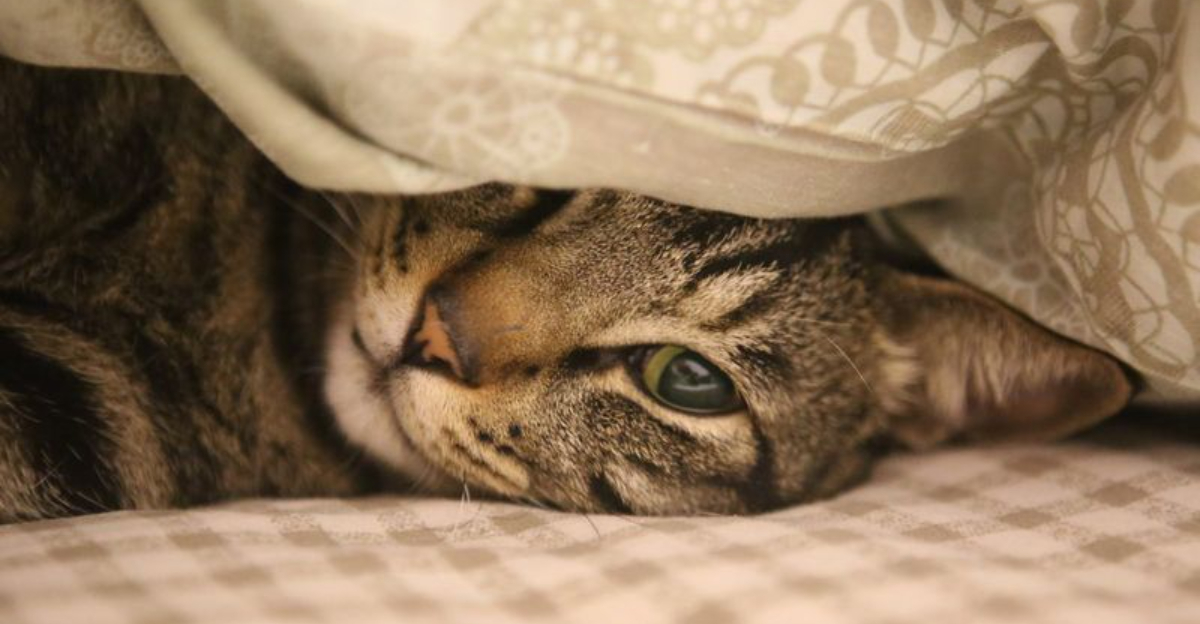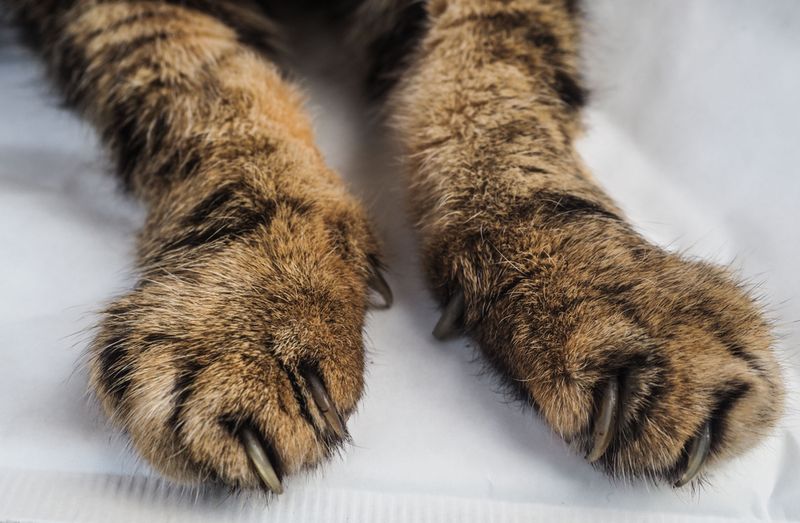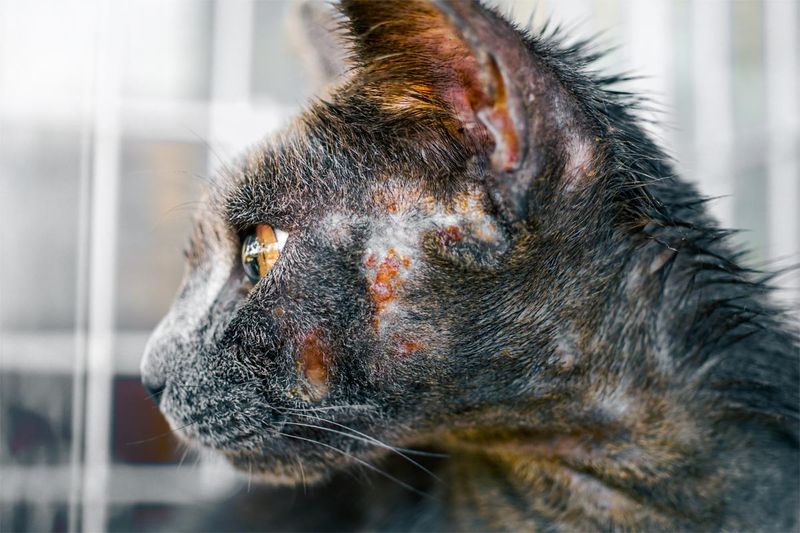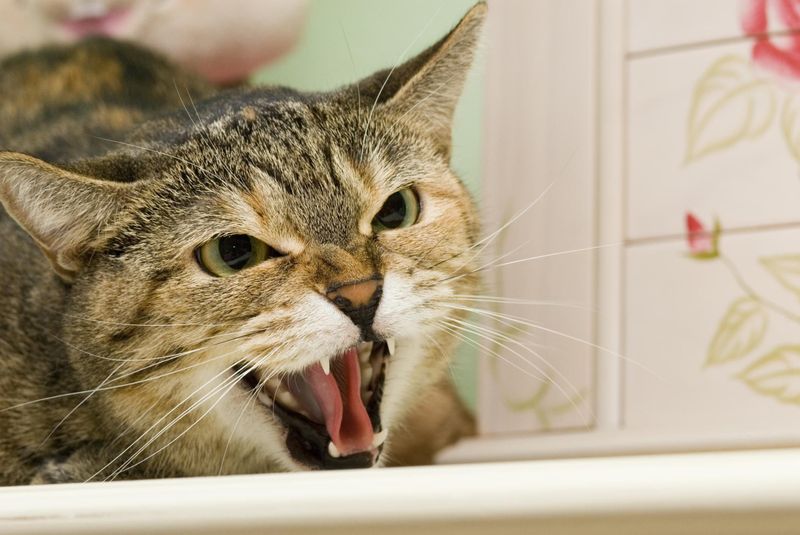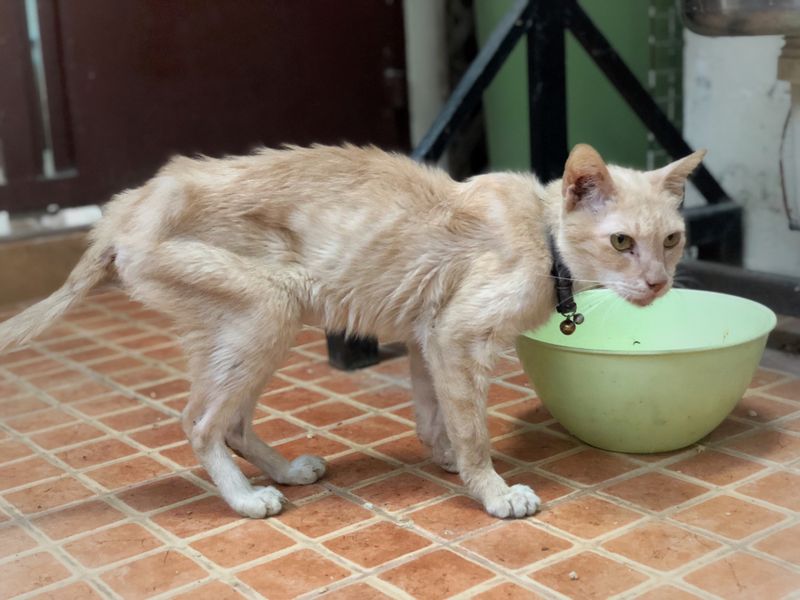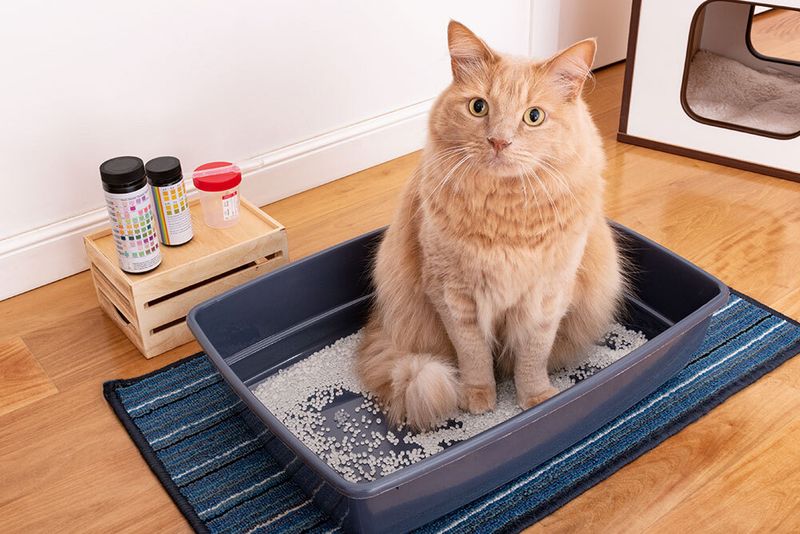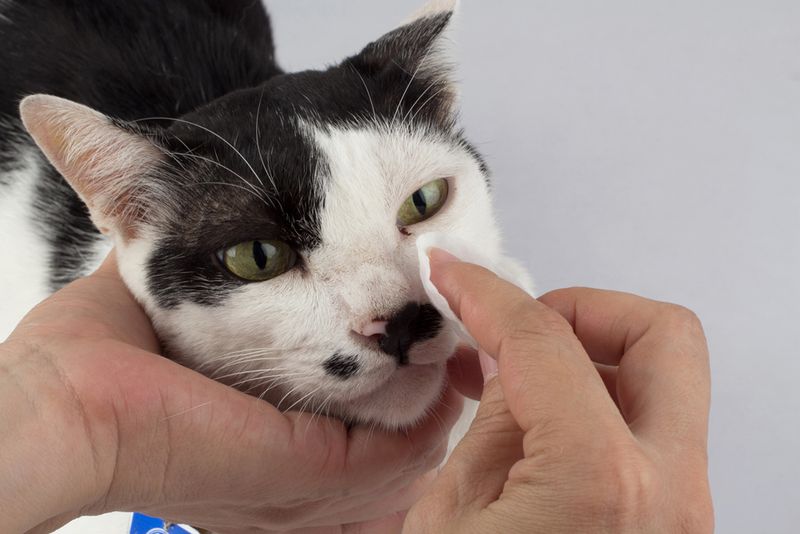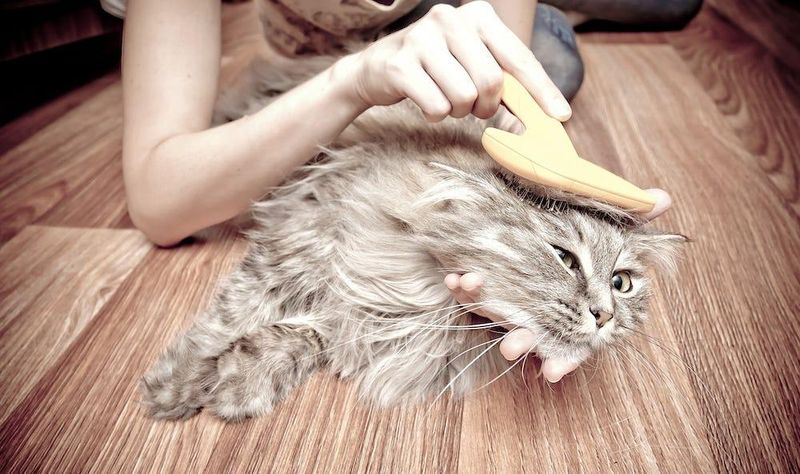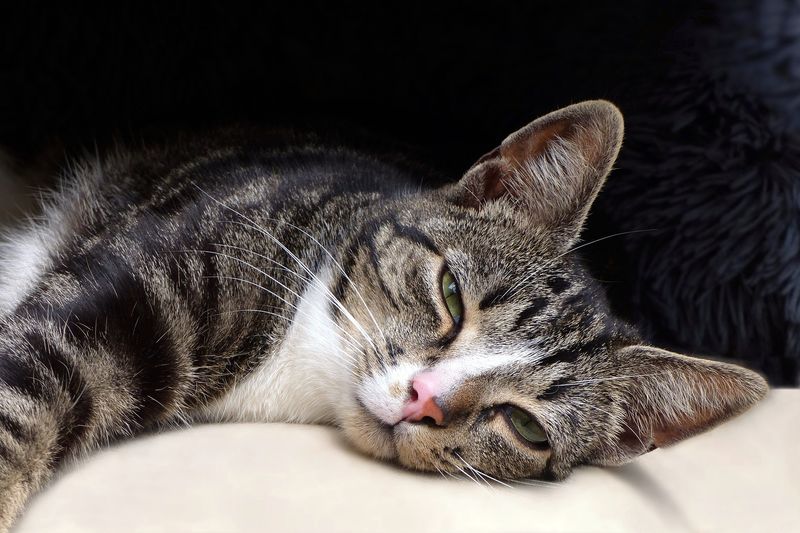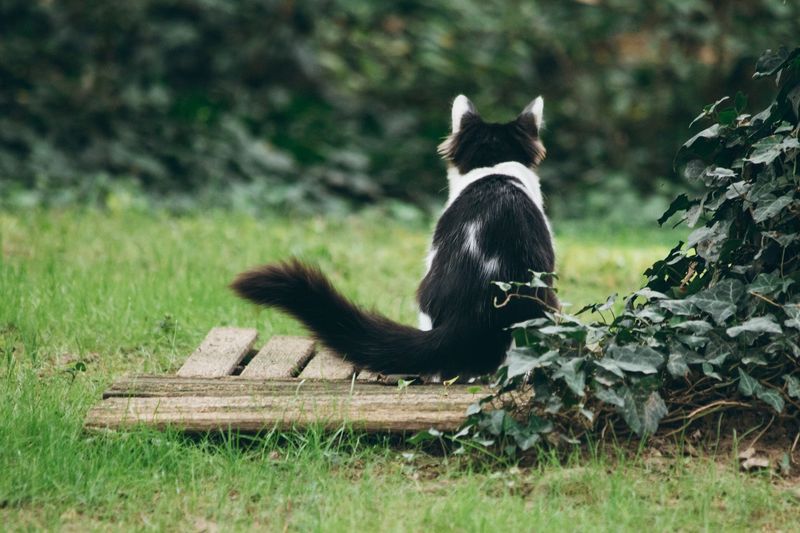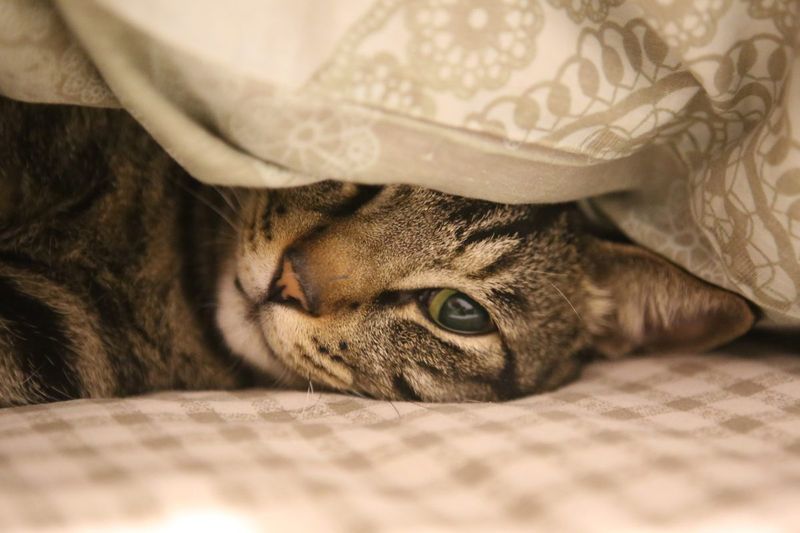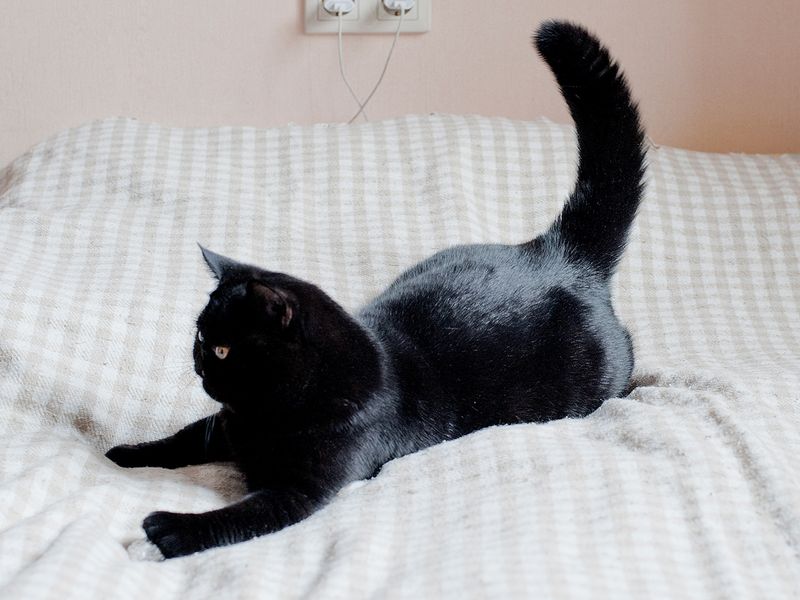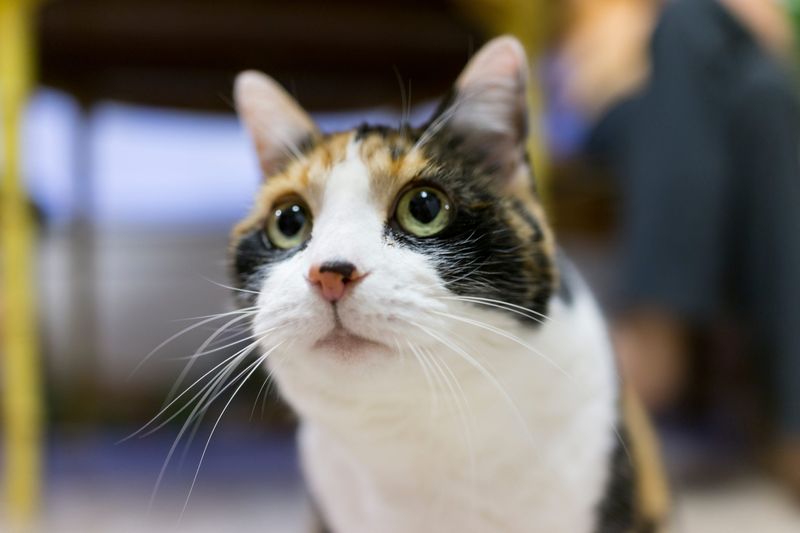📖 Table of Content:
- 1. Changes in Mobility or Jumping Ability
- 2. Excessive Grooming or Licking One Area
- 3. Unusual Aggression When Touched
- 4. Appetite Changes and Weight Loss
- 5. Altered Litter Box Habits
- 6. Unusual Vocalization or Silence
- 1. Occasional Hairballs Are Normal
- 2. Slow Blinking Is Actually Affection
- 3. Tail Flicking Often Shows Interest
- 4. Hiding Can Be a Personality Trait
- 5. Nighttime Activity Isn’t Abnormal
- 6. Dilated Pupils Can Be Excitement
Cats are masters at hiding pain—it’s an evolutionary survival tactic that can make health problems tough to spot. As cat parents, knowing the difference between genuine pain signals and normal feline behaviors can mean the difference between timely vet care and unnecessary worry. This guide reveals telltale pain indicators you should never ignore, along with common behaviors that might seem concerning but are usually perfectly normal.
1. Changes in Mobility or Jumping Ability
Reluctance to jump or difficulty moving around represents one of the clearest indicators of feline discomfort. A cat that once effortlessly leaped onto countertops but now hesitates or avoids jumping altogether may be experiencing joint pain or muscle issues.
Stiffness when walking, limping, or an unusual gait also signals potential problems. Many cats develop arthritis as they age, particularly in their hips and spine.
Watch for changes in how your cat navigates stairs or favorite perches. If your normally agile companion starts choosing lower resting spots or needs multiple attempts to reach higher places, contact your veterinarian for an evaluation.
2. Excessive Grooming or Licking One Area
Focused attention on a single body part often indicates your cat is trying to soothe pain in that specific location. The behavior might create bald patches or irritated skin over time.
Pay special attention if your cat repeatedly licks joints, the base of the tail, or the abdomen. These areas commonly develop painful conditions that trigger the obsessive grooming response.
The natural analgesic properties in cat saliva temporarily relieve discomfort, reinforcing this behavior. When you notice this pattern, gently examine the area for swelling, wounds, or unusual warmth – all potential signs of injury or infection requiring veterinary care.
3. Unusual Aggression When Touched
Sudden hissing, swatting, or biting when you touch certain areas signals your cat is protecting a painful spot. This defensive reaction often surprises owners of typically affectionate cats.
The behavior serves as a clear warning: “Don’t touch me there—it hurts!” Track which specific areas trigger this response to help your veterinarian pinpoint the problem. Dental pain, for example, might cause aggression when you touch near the face.
Never force interaction with a cat showing these signals. Respect their boundaries and seek professional help instead. A thorough veterinary examination can identify hidden injuries, infections, or internal issues causing this protective behavior.
4. Appetite Changes and Weight Loss
A noticeable decrease in food consumption often indicates your cat is experiencing discomfort. Dental pain makes chewing difficult, while digestive or internal issues can reduce appetite overall.
Weight loss accompanying reduced eating warrants immediate veterinary attention. Healthy cats rarely refuse food for extended periods unless something is wrong. Monitor your cat’s food bowl to track consumption patterns accurately.
Some painful conditions paradoxically increase appetite while preventing weight gain. Either extreme—eating more without gaining weight or eating less with visible weight loss—signals potential health problems requiring professional evaluation. Don’t wait for dramatic changes before consulting your vet.
5. Altered Litter Box Habits
Changes in bathroom behavior frequently indicate pain or discomfort. A cat straining in the litter box, crying while urinating, or eliminating outside the box entirely may have urinary tract inflammation or blockage—a potentially life-threatening emergency.
Male cats are particularly susceptible to urinary blockages that can quickly become fatal. Frequent trips to the box, with a minimal output, signal serious problems requiring immediate veterinary care.
Constipation also causes visible discomfort during litter box visits. Monitor your cat’s waste for changes in consistency, color, or frequency. These observations provide valuable information for your veterinarian and could help detect painful conditions before they become critical.
6. Unusual Vocalization or Silence
Excessive meowing, yowling, or crying often communicates distress. A normally quiet cat becoming vocal, particularly with low-pitched, drawn-out sounds, may be expressing pain they can’t hide anymore.
Conversely, a typically talkative cat becoming unusually quiet suggests they’re conserving energy to cope with discomfort. Both extremes represent significant behavioral changes worth investigating.
The timing of vocalizations provides important clues. Cries when jumping or using the litter box directly connect the pain to specific activities. Record these episodes if possible to show your veterinarian, as cats often mask symptoms during stressful clinic visits.
1. Occasional Hairballs Are Normal
Finding the occasional furry deposit on your floor is perfectly natural for cats. Regular grooming inevitably leads to ingested hair that must exit somehow. Most cats expel hairballs every few weeks without any health concerns.
Long-haired breeds naturally produce more frequent hairballs than their short-haired counterparts. Seasonal changes also affect shedding patterns and subsequent hairball frequency.
Regular brushing helps reduce excessive hairballs by removing loose fur before your cat can swallow it. Only when hairballs become extremely frequent (more than once weekly) or your cat retches without producing anything should you consult your veterinarian. Otherwise, this messy but normal behavior doesn’t indicate pain.
2. Slow Blinking Is Actually Affection
Those sleepy-looking, half-closed eyes aren’t signs of pain but expressions of feline contentment and trust. Cat behaviorists call these “slow blinks” or “cat kisses”—a universal feline signal of relaxation and affection.
When your cat slowly closes and opens their eyes while gazing at you, they’re communicating comfort in your presence. You can return this gesture by slowly blinking back, strengthening your bond through this shared language.
The confusion arises because humans associate squinted eyes with discomfort. For cats, however, wide eyes indicate alertness or fear, while relaxed, narrowed eyes signal they feel safe enough to temporarily lower their guard—the ultimate compliment in cat communication.
3. Tail Flicking Often Shows Interest
A gently swishing tail typically indicates focus and excitement rather than discomfort. While aggressive thrashing can signal irritation, subtle tip movements often mean your cat is mentally engaged with something interesting.
During playtime or bird-watching, this controlled movement helps cats maintain balance while preparing for potential pouncing. The key lies in distinguishing between different tail movements—quick, wide swishes suggest agitation, while slow, small flicks show concentration.
Context matters tremendously when interpreting tail language. A cat staring intently at a toy or outdoor creature while flicking their tail tip is displaying normal predatory focus. Only when combined with other warning signs like flattened ears or dilated pupils should tail movement raise concerns.
4. Hiding Can Be a Personality Trait
Some cats naturally prefer secluded spaces regardless of their physical condition. Shy, reserved personalities often seek quiet retreats, especially in multi-pet households or homes with frequent visitors.
Environmental factors influence hiding behaviors without indicating pain. Construction noise, new furniture, or even rearranged rooms can prompt temporary hiding as cats adjust to changes.
The duration and context of hiding provide important clues. A cat that emerges for meals, playtime, and affection before returning to private spaces simply enjoys solitude. Only when hiding becomes sudden, prolonged, or accompanies other behavioral changes should it raise health concerns. Many perfectly healthy cats simply appreciate their private sanctuaries.
5. Nighttime Activity Isn’t Abnormal
Midnight zoomies and pre-dawn hunting games reflect your cat’s natural nocturnal tendencies rather than discomfort. Cats are crepuscular hunters, biologically programmed for activity during dawn and dusk.
Those 3 AM sprints across your bedroom demonstrate healthy energy levels and natural instincts. Domestic cats retain their wild ancestors’ hunting patterns despite our attempts to shift their schedules to match ours.
Providing stimulating playtime before bedtime helps reduce nighttime activity by satisfying hunting drives earlier. Interactive toys, puzzle feeders, and designated climbing spaces give cats appropriate outlets for their energy. Unless accompanied by distressed vocalizations or other pain signals, nocturnal activity represents normal feline behavior.
6. Dilated Pupils Can Be Excitement
Wide, black pupils don’t always signal pain or fear—they frequently indicate excitement or playfulness. During hunting mode or interactive play, pupil dilation helps cats gather maximum light for better visual tracking.
Environmental factors like dim lighting naturally cause pupil enlargement without any emotional component. The quick shift between constricted and dilated pupils demonstrates your cat’s responsive, healthy vision adapting to changing conditions.
Evaluate pupil size alongside other body language cues. Dilated pupils with relaxed whiskers, forward-facing ears, and playful movements suggest positive stimulation. Only when combined with flattened ears, hunched posture, or hiding behavior should enlarged pupils raise concerns about pain or distress.
